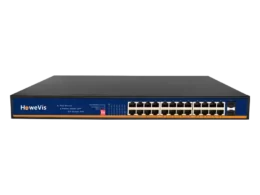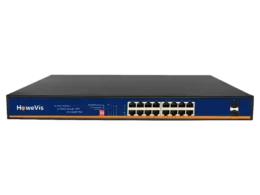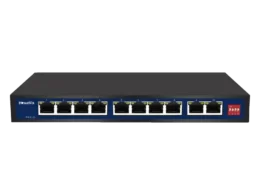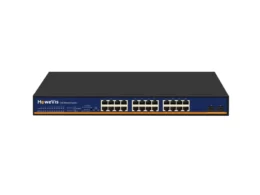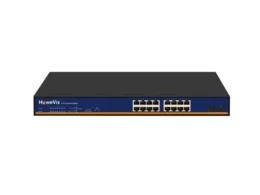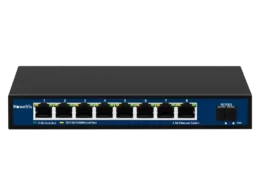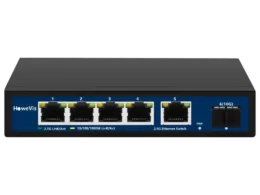PoE switches make setting up networking infrastructure easier, affordable, and clutter-free. But in an organizational setup, we always have devices that are not PoE enabled.
That’s when the doubts start to creep in whether it’s worth having a complete PoE infrastructure. The question is troubling. And it keeps organizations from setting up neat PoE networking infrastructure.
We will delve into all the probable answers and help you get out of this “PoE vs. non-PoE” dilemma. Moreover, we will discuss the co-operability and potential challenges.
What Are Non-PoE Devices?
The non-PoE devices are the devices that do not take power from networking channels. They either rely on AC or DC power sources. Personal computers and laptops are prominent examples of non-PoE devices.
Almost all organizations have an array of PCs in their network. They use Ethernet lines to meet their data transfer and networking needs. Conventional office spaces, schools, colleges, hotels, and multi-story apartments use the same ethernet lines to transfer data.
With increasing security and control needs, simple Ethernet lines are no longer sustainable for organizations. They are becoming a pain point for many enterprises and their office spaces. The reason behind this is an absolute lack of control and security features. Such network infrastructures are always prone to hacking disasters.
They are like a public place where anyone can barge in. Nevertheless, the PoE switches solve this problem. And most importantly, organizations can use these switches without disrupting their existing infrastructure.
But the question remains. Can the non-Poe-enabled devices running in an enterprise operate with these Poe switches? That’s what we try to answer next in this piece!
Can You Use PoE Switch With Non-PoE Devices?
The answer is yes. But, if the question is, are all PoE switches safe to use with non-PoE devices? The answer would be No.
While not all enterprises and office spaces have similar needs, PoE manufacturers make different PoE switches with different configurations. Also, not all PoE switches come at the same price point.
The good thing is, that you can mix PoE-enabled devices and non-PoE devices in a network with the help of a PoE switch. First, understand the classification of PoE switches available in the market. They are divided into three segments—unmanaged, hybrid, and managed switches.
The unmanaged and hybrid PoE switches offer limited security and control features. They target industries that have minimal security needs. So, manufacturers try to minimize their costs by limiting advanced features.
Most of them may not have auto-sensing. That’s a critical feature that you need if you are looking to mix PoE and non-PoE devices in a network. Auto-sensing detects if a device needs power through the cable or not. If the device is PoE incompatible, it will not send power to the device.
The bottom line is clear. You can use non-PoE devices with PoE switches, provided that you are employing advanced managed PoE switches with the auto-sensing feature.
Now, we will discuss its technicalities in the following sections. How it functions and how a standard PoE switch can affect a non-PoE device.
How to Use PoE Switch With Non-PoE Devices?
Using PoE switches with non-PoE devices is easy. You can easily plug and play. But as PoE switches push power that non-PoE devices do not need, that mandates some checks. Once these checks are clear, you can confidently plug all your non-PoE devices without worrying about any potential damage.
We discussed the crucial role that managed PoE switches play. But you can’t afford to go with just a product description. You must check all the configurations manually. The managed switch you are going to use should offer PoE port settings to disable PoE capability. The port setting provides extra protection to your non-PoE devices.
However, it is an unlikely scenario with auto-sensing switches, even if they fail to detect a non-PoE device. You can manually disable the PoE capability for that particular device.
Also, there is always a case of misleading marketing. Many times, vendors sell passive PoE switches, marketing them as advanced managed switches. Passive PoE switches push 24 Volt power without any check. And they can harm your non-PoE-enabled devices. Make sure all ports of the PoE switch have 802.11af compatibility.
Lastly, you should check the configuration software of the PoE switch and manually check the features enabled. At times, people harm their non-POE devices in the network, despite using the right PoE switch. That happens because of idiotic mistakes, like allowing passive switching in an advanced managed PoE switch.
All the scenarios discussed above are enough to substantiate that performing checks before plugging in devices to a switch is non-negotiable.
Do PoE Switches Damage Non-PoE Devices?
There is no upfront answer to this question. We did discuss how PoE switches can operate with non-PoE devices. However, it does not entirely rule out the scenario of whether a PoE switch can harm non-PoE devices. To derive any conclusion, you first need to understand the power structure of PoE switches.
The power used over Ethernet ranges from 44 to 57 volts, and the standard usage is 48 volts. That means if not controlled, the current is enough to damage even PoE-enabled devices. That’s where the role of advanced PoE switches comes into play. These switches conduct a “signatures detection” before they transmit full-throttle power to any device.
The signature detection process is nothing but checking the power resistance of a compatible device. This process employs lower voltage to analyze the power requirement of the device. Once the check is over, the PoE switch starts to supply power according to the device’s needs.
Once you couple the features of the signature detection process with auto-sensing, the combination offers foolproof power stabilization to both PoE and non-PoE devices.
Managed PoE switches offer all the mentioned features. And they are perfect for mixed operability.
Another misconception that surrounds PoE switches is that they force power into devices. That’s incorrect. PoE Switches clear the power output according to the device’s need. There’s no separate adapter needed to balance power output.
Final Thoughts!
Interestingly, PoE switches are becoming a necessity for enterprises. That’s because more and more workplaces are now moving towards Smart solutions. And PoE switches offer a great medium to run those Smart devices in a secure ecosystem.
PoE switches give enterprises more control and security. Organizations are now accepting the importance of PoE-enabled network infrastructure. The rapid adaptation of PoE-enabled network infrastructure in the corporate world is a testament to the same.
Also, mixed operability is a reality because non-PoE devices are not going anywhere soon. And they are as important in an organization setup as PoE devices. It is a fact, and it’s true for all industries.
In short, PoE switches can efficiently run non-PoE devices. As long as the choice of PoE switch is correct and aligns with gadgets, it will operate without any damage.
Organizations are continuously looking into this possibility. If accurate information reaches the concerned industries, the adoption of PoE infrastructure will increase even faster. The industries that were once skeptical about mixed operability are now taking advantage of PoE switches. And, of course, PoE-enabled networks.
PoE switches make setting up networking infrastructure easier, affordable, and clutter-free. But in an organizational setup, we always have devices that are not PoE enabled.


